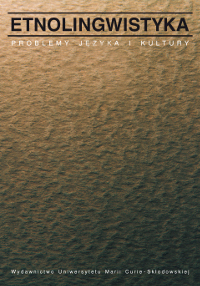Swój i obcy w mieście – kilka uwag o stereotypie kielczanina (rzecz o stosunkach polsko-żydowskich)
US and THEM in the city: the stereotype of an inhabitant of Kielce (Polish-Jewish relations)
Author(s): Marzena MarczewskaSubject(s): Anthropology, Language and Literature Studies, Applied Linguistics, Cognitive linguistics, Philology
Published by: Wydawnictwo Naukowe Uniwersytetu Marii Curie-Sklodowskiej
Keywords: us vs. them; stereotype; Kielce dweller; Kielce pogrom; Polish-Jewish relationships
Summary/Abstract: The author reconstructs the stereotype of an inhabitant of Kielce. The reconstruction shows that Kielce dwellers are generally seen as people who are hostile and very reluctant towards strangers. The stereotype seems to result from the town’s history. Kielce, the Cracowian bishops’ property, was a restricted area where Jewish settlement was forbidden until 1862. Although the hostility of the residents of Kielce is commonly associated with the pogrom of Jews in 1946, the stereotype of an inhabitant of the Kielce region is much older and was described in tourist guidebooks in 1920’s. The 1862 pogrom (often called “the disgrace of Kielce”) is also strictly connected with the persistence of the stereotype in question. The data on the Kielce pogrom in the archives of the Polish Ministry of Internal Affairs in Warsaw and in the local archive in the town of Kielce show that both stereotypes: the stereotype of a Jew (a stranger, dangerous, rich, of a different religion) and the stereotype of an inhabitant of Kielce (nicknamed “pocket-knife”, hot-tempered, backward, poor) were used by the secret police in propaganda materials after the pogrom.
Journal: Etnolingwistyka. Problemy Języka I Kultury
- Issue Year: 19/2007
- Issue No: 19
- Page Range: 164-173
- Page Count: 11
- Language: Polish

